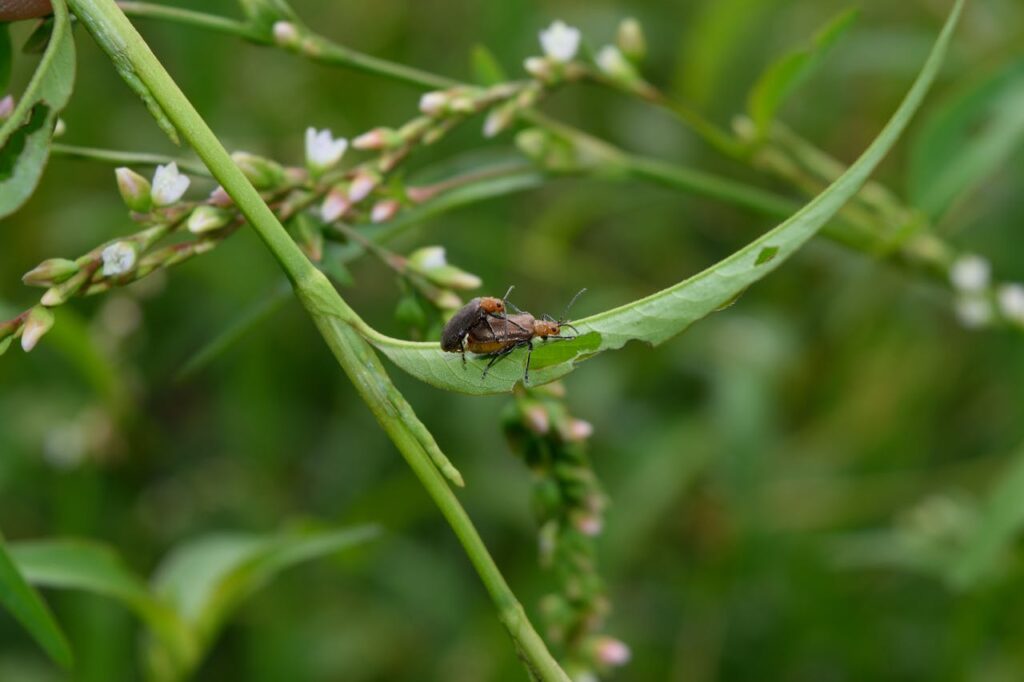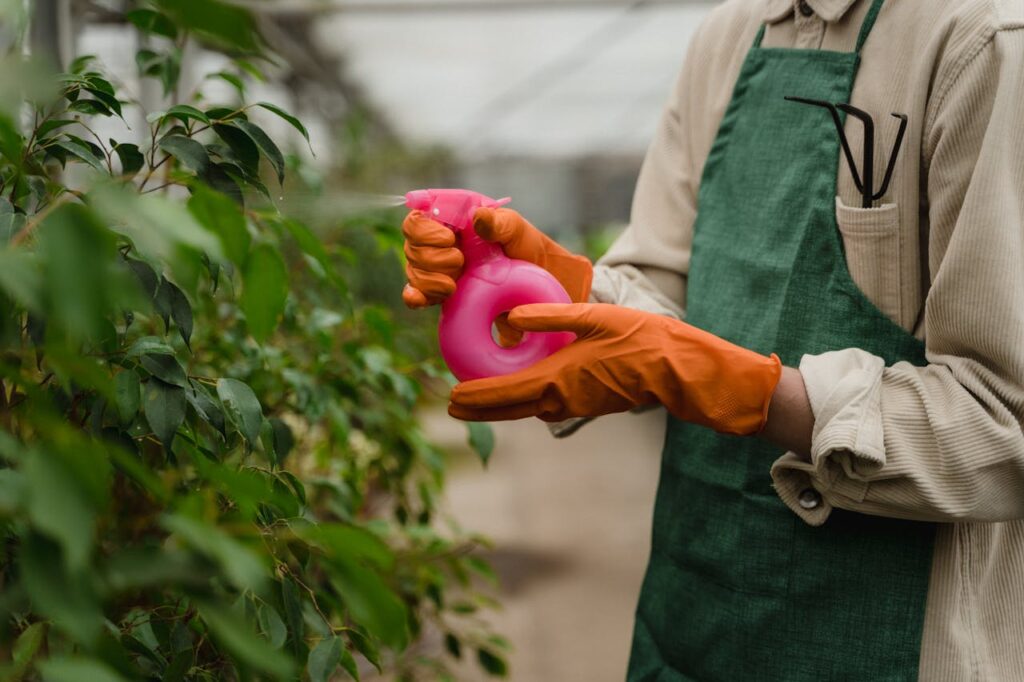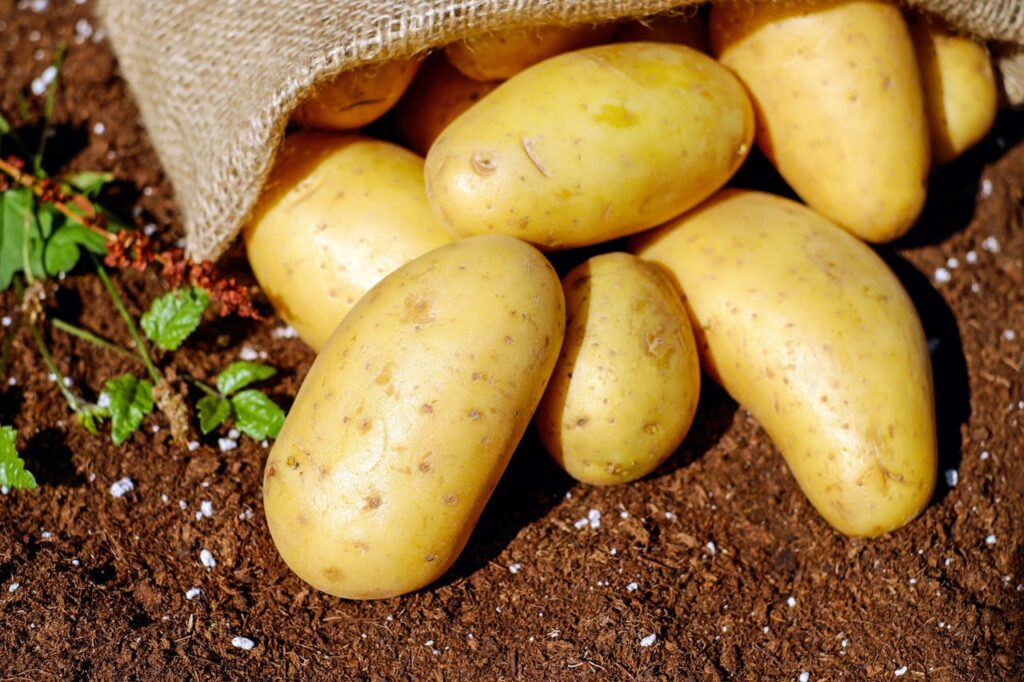Are you eager to learn how to grow organic vegetables while keeping pesky invaders at bay? Mastering how to start organic pest control is crucial for maintaining a thriving, chemical-free garden. This in-depth guide will walk you through various organic pest control methods, helping you create a sustainable and productive vegetable garden that’s resistant to common pests.
Introduction
Organic pest control is the cornerstone of successful organic vegetable gardening. For those wondering how to plant a pest-resistant garden, it’s essential to understand that this approach goes beyond simply avoiding chemical pesticides. It involves creating a balanced ecosystem where plants thrive and pests are naturally kept in check. By implementing natural garden pest solutions, you can protect your crops while preserving the environment, ensuring the health of beneficial insects, and providing safe, nutritious produce for your family.

II. Understanding Garden Pests
Before diving into how to start organic pest control, it’s crucial to identify and understand common vegetable garden pests. These may include:
- Insects: Aphids, caterpillars (like tomato hornworms), beetles (such as cucumber beetles), and whiteflies.
- Mollusks: Slugs and snails, which can decimate young seedlings.
- Mammals: Rabbits, deer, and even smaller rodents like voles.
Learning to recognize pest damage is a vital skill for any organic gardener. For instance, holes in leaves might indicate caterpillar activity, while curled or distorted leaves could signal aphid infestation. Understanding pest life cycles and behavior is equally important. Many insects have specific seasons when they’re most active, and knowing these patterns can help you time your preventive measures more effectively.
III. Preventive Measures
Prevention is the first line of defense in organic pest control methods. Here are some detailed strategies for how to grow organic vegetables with minimal pest issues:
- Crop rotation: This technique involves changing the location of plant families each season. For example, don’t plant tomatoes (Solanaceae family) in the same spot year after year. This practice helps prevent the buildup of pest populations and soil-borne diseases specific to certain plant families.
- Companion planting techniques: Some plants naturally repel pests or attract beneficial insects. For instance, planting basil near tomatoes can deter tomato hornworms, while marigolds can repel nematodes and attract pollinators.
- Soil health management: Healthy soil promotes strong plants that are more resistant to pests and diseases. Regularly add organic matter, such as compost, to your soil to improve its structure and nutrient content.
- Selecting pest-resistant vegetable varieties: Many modern vegetable varieties have been bred for natural pest resistance. For example, some tomato varieties are resistant to nematodes, while certain cucumber varieties resist cucumber beetles.
- Garden sanitation: Regularly remove dead leaves, fallen fruits, and other debris from your garden. These can harbor pests and diseases. At the end of the growing season, clear out old plant material to prevent overwintering pests.
- Physical barriers: Use row covers, netting, or fencing to keep pests away from your plants. For example, floating row covers can protect young seedlings from flea beetles and cabbage moths.
IV. Biological Control Methods
Harnessing nature’s own pest control mechanisms is an effective way to manage garden pests organically. Here’s how to use biological pest control:
- Attract beneficial insects: Ladybugs, lacewings, and praying mantises are voracious predators of many garden pests. Plant flowers like yarrow, dill, and cosmos to attract these helpful insects to your garden.
- Encourage birds as natural predators: Install bird feeders and baths to attract insect-eating birds to your garden. Birds like chickadees and wrens can consume large numbers of caterpillars and other pests.
- Promote biodiversity: Create a diverse garden ecosystem by planting a variety of crops and flowering plants. This diversity confuses pests and provides habitat for beneficial insects and other natural predators.
- Introduce beneficial nematodes: These microscopic organisms can help control soil-dwelling pests like cutworms and root-knot nematodes.

V. Organic Sprays and Treatments
When learning how to start organic pest control, it’s helpful to know about natural sprays and treatments:
- Homemade solutions:
- Neem oil spray: A versatile organic pesticide alternative that disrupts the life cycle of many pests. Mix 1-2 tablespoons of neem oil with 1 quart of water and a few drops of mild liquid soap.
- Garlic and pepper spray: Blend 2 hot peppers, 1 whole garlic bulb, and 1 quart of water. Strain and spray on plants to deter many common garden pests.
- Soap spray: Mix 1 tablespoon of mild liquid soap with 1 quart of water. This solution is effective against soft-bodied insects like aphids and whiteflies.
- Commercial organic pesticides: Look for OMRI-listed products for certified organic options. These might include products based on botanical oils, beneficial bacteria like Bacillus thuringiensis (Bt), or minerals like diatomaceous earth.
Always apply these treatments carefully, following proper application techniques to maximize effectiveness while minimizing harm to beneficial insects. It’s best to apply sprays early in the morning or late in the evening when beneficial insects are less active.
VI. Mechanical Control Methods
Sometimes, the most straightforward approaches are the most effective. Try these hands-on techniques:
- Handpicking pests: Regularly inspect plants and remove pests manually. This method is particularly effective for larger pests like tomato hornworms or Japanese beetles.
- Setting traps and lures: Use sticky traps or pheromone lures to catch pests. Yellow sticky traps can be effective for whiteflies and fungus gnats, while pheromone traps can help control moth species.
- Water sprays: A strong jet of water can dislodge many pests, particularly aphids and spider mites. Be sure to spray the undersides of leaves where pests often hide.
- Pruning: Remove affected plant parts to prevent pest spread. This can be particularly effective for managing diseases that pests may vector.
VII. Plant-Based Repellents
Many plants naturally repel garden pests. Incorporate these into your garden design:
- Herbs: Basil, mint, rosemary, and thyme not only add flavor to your culinary creations but also help repel various insects. Plant them throughout your vegetable garden or in containers nearby.
- Flowers: Marigolds and nasturtiums are known for their pest-repelling properties. Marigolds can help control nematodes in the soil, while nasturtiums can act as a trap crop for aphids.
- Essential oils: Some gardeners use diluted essential oils as natural repellents. For example, peppermint oil can deter ants and aphids, while citronella oil may repel some flying insects.
VIII. Cultural Practices
Adopting the right gardening habits can significantly reduce pest problems:
- Proper watering techniques: Water at the base of plants to avoid creating a humid environment that attracts pests and encourages fungal diseases. Consider using drip irrigation or soaker hoses.
- Mulching: Use organic mulch to suppress weeds and create habitat for beneficial insects. Straw, leaves, or wood chips can be effective mulches in vegetable gardens.
- Timing of planting and harvesting: Align your gardening activities with local pest life cycles. For example, you might plant squash later in the season to avoid peak squash bug populations.
- Intercropping: Plant diverse crops together to confuse and deter pests. For instance, interplanting aromatic herbs with vegetables can mask the scent of the vegetables, making them harder for pests to locate.
IX. Integrated Pest Management (IPM)
IPM is a holistic approach to how to grow organic vegetables with minimal pest damage. It involves:
- Combining multiple organic control methods: Rather than relying on a single technique, IPM uses a variety of strategies tailored to specific pest problems.
- Regular monitoring and record-keeping: Inspect your garden regularly and keep detailed notes about pest populations, plant health, and the effectiveness of various control methods.
- Making informed decisions based on pest thresholds and plant health: Not all pest presence requires intervention. IPM involves understanding at what point pest damage becomes economically or aesthetically unacceptable.
- Prioritizing least-toxic methods: Start with the most benign control methods and only escalate to more intensive techniques if necessary.
X. Specific Solutions for Common Vegetable Garden Pests
Here are some organic pest control methods for specific pests:
- Aphids: Use strong water sprays to dislodge aphids or introduce ladybugs as natural predators. You can also try planting nasturtiums as a trap crop.
- Tomato hornworms: Handpick these large caterpillars and use Bacillus thuringiensis (Bt) as a biological control. Planting dill nearby can attract parasitic wasps that prey on hornworms.
- Squash bugs: Use row covers until flowering begins and practice crop rotation. Planting radishes or nasturtiums near squash plants may help repel these pests.
- Cucumber beetles: Implement trap crops like blue hubbard squash and use kaolin clay sprays on cucumber plants. Yellow sticky traps can also help reduce beetle populations.
- Cabbage worms: Cover plants with row covers and use Bt. Planting nectar-rich flowers nearby can attract parasitic wasps that prey on cabbage worms.
XI. Organic Soil Amendments for Pest Resistance
Healthy soil is the foundation of pest-resistant plants. Consider these amendments:
- Compost and organic matter: Improves soil structure, increases water retention, and provides slow-release nutrients. Aim to incorporate 2-3 inches of compost into your soil annually.
- Beneficial microorganisms: Introduce mycorrhizal fungi and beneficial bacteria through specialized soil inoculants. These microorganisms can improve plant nutrient uptake and boost overall plant health.
- Rock dusts and mineral supplements: Provide trace minerals for robust plant growth. Rockdust, greensand, and kelp meal are excellent sources of micronutrients that can strengthen plants against pest attacks.
Conclusion
Learning how to grow organic vegetables using natural pest control methods is a rewarding journey that requires patience, observation, and a willingness to work with nature rather than against it. By implementing these organic pest control methods, you’ll create a thriving, sustainable garden ecosystem that produces bountiful harvests while minimizing pest damage.
Remember, the goal of organic pest management isn’t to eliminate all pests, but rather to keep their populations at a manageable level. A few insects in your garden are a sign of a healthy ecosystem. As you gain experience, you’ll become more adept at recognizing the delicate balance between pests and beneficial organisms in your garden.


